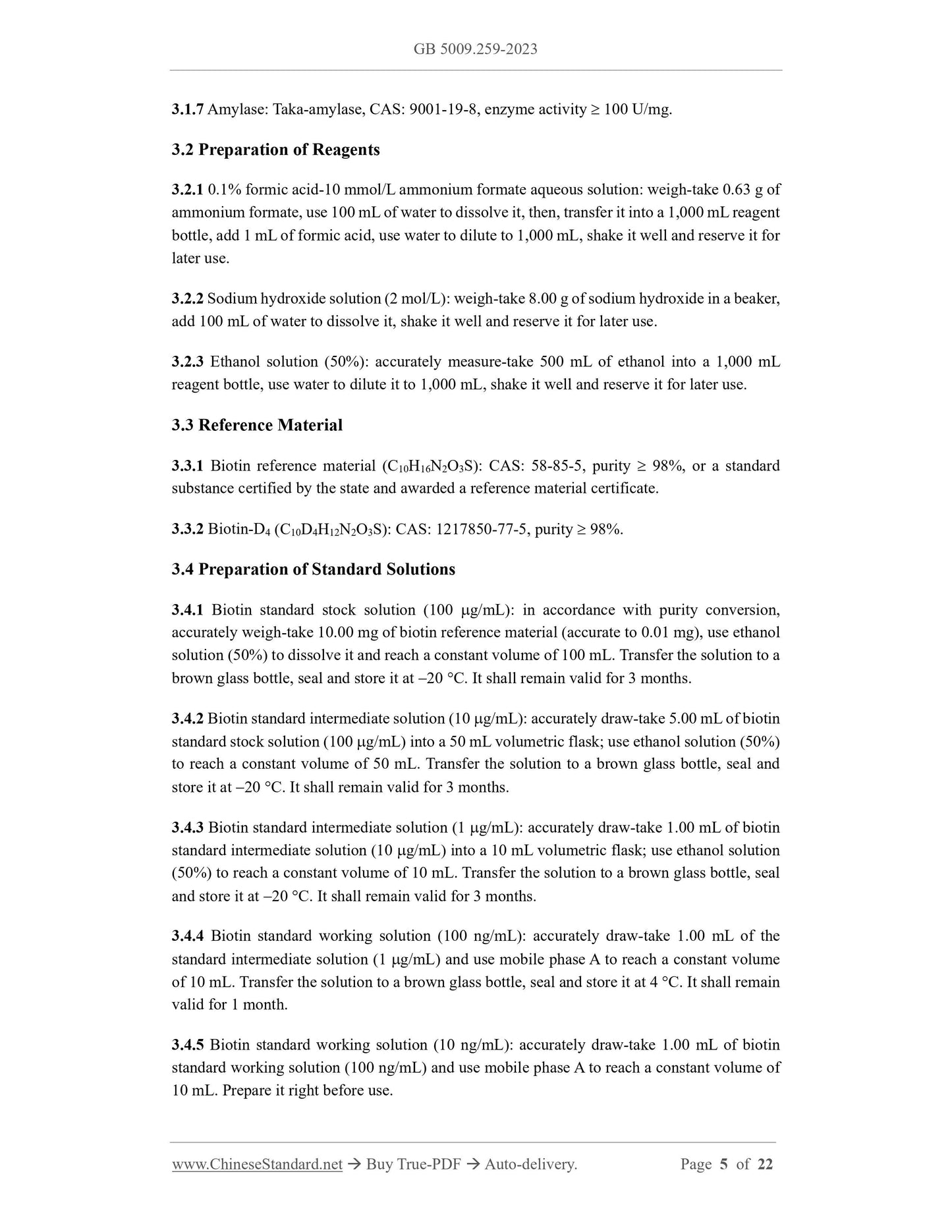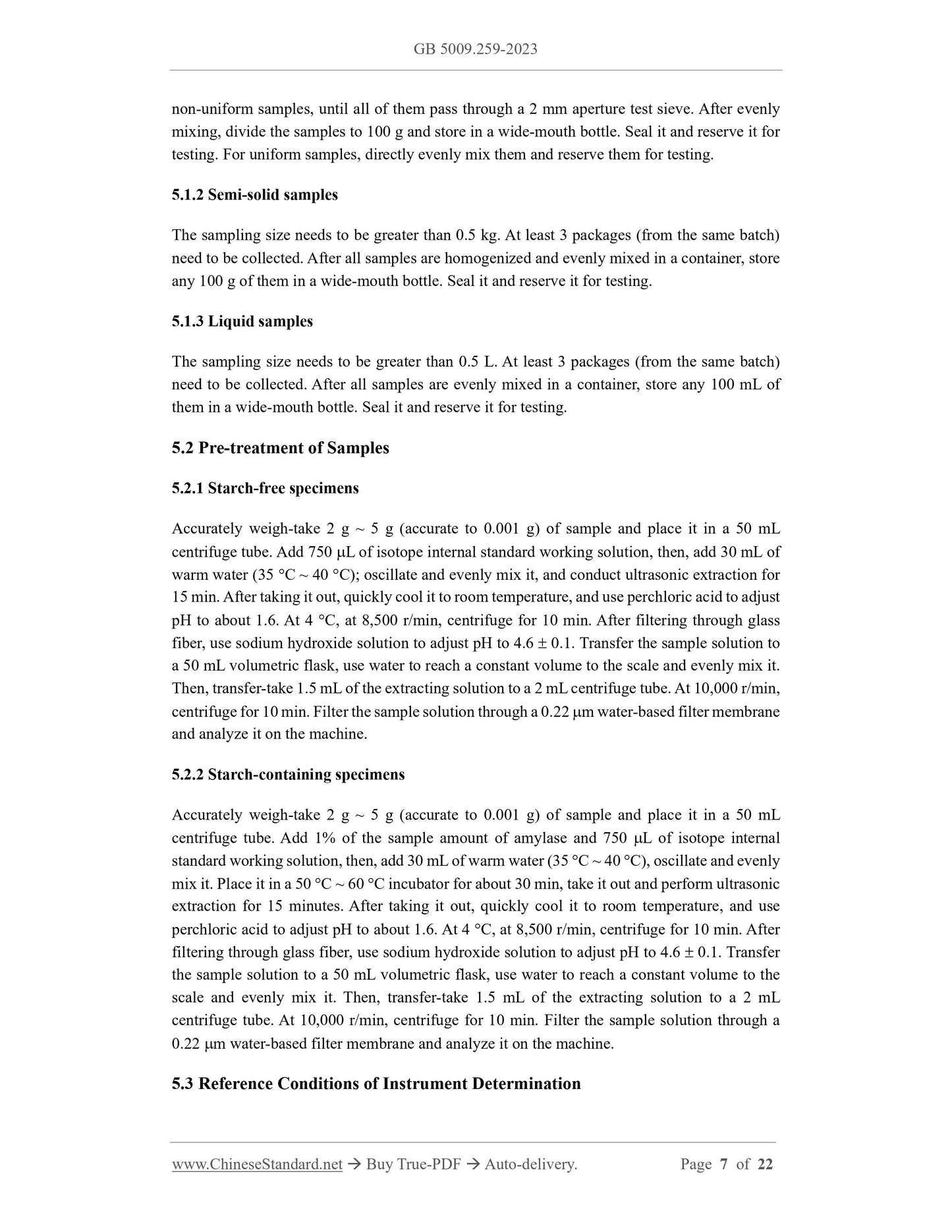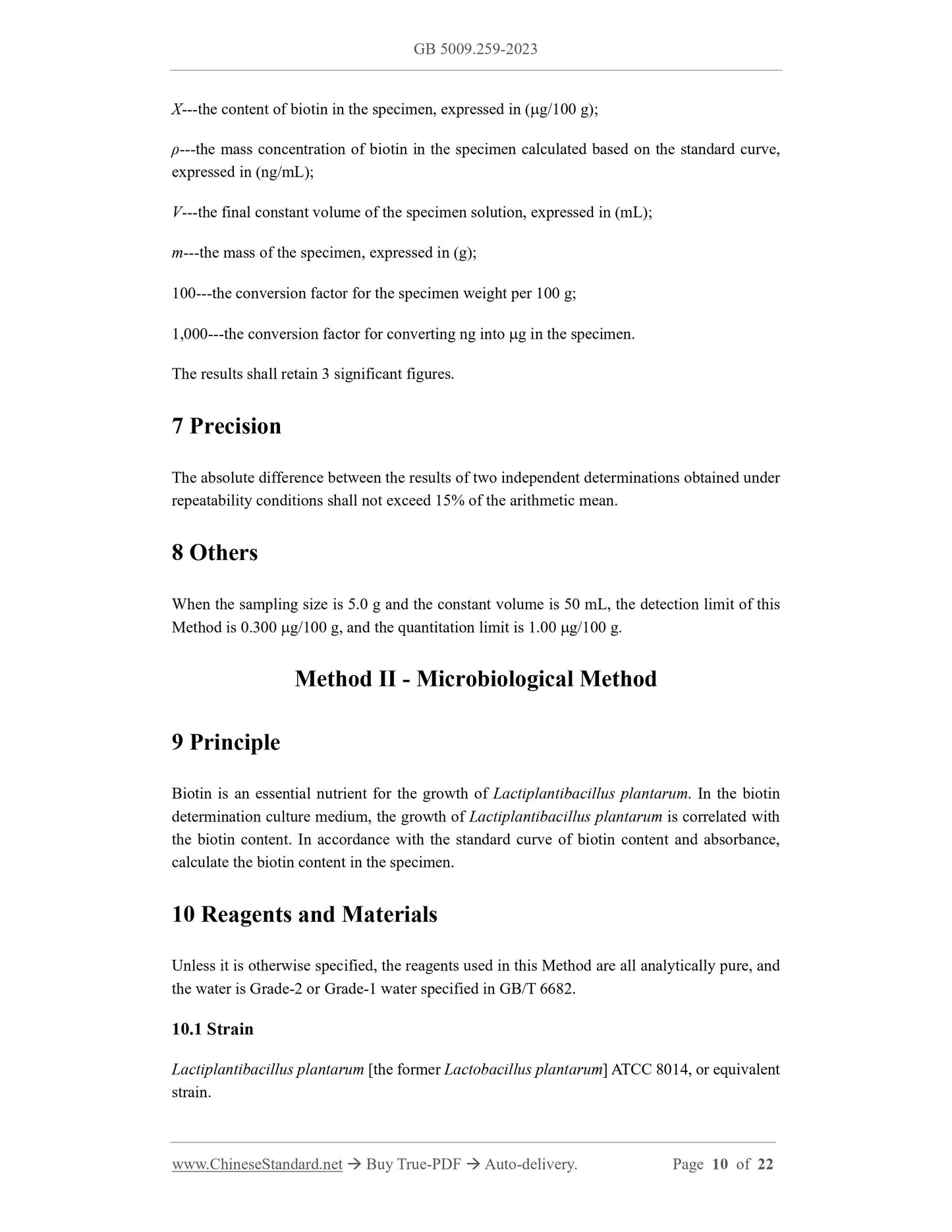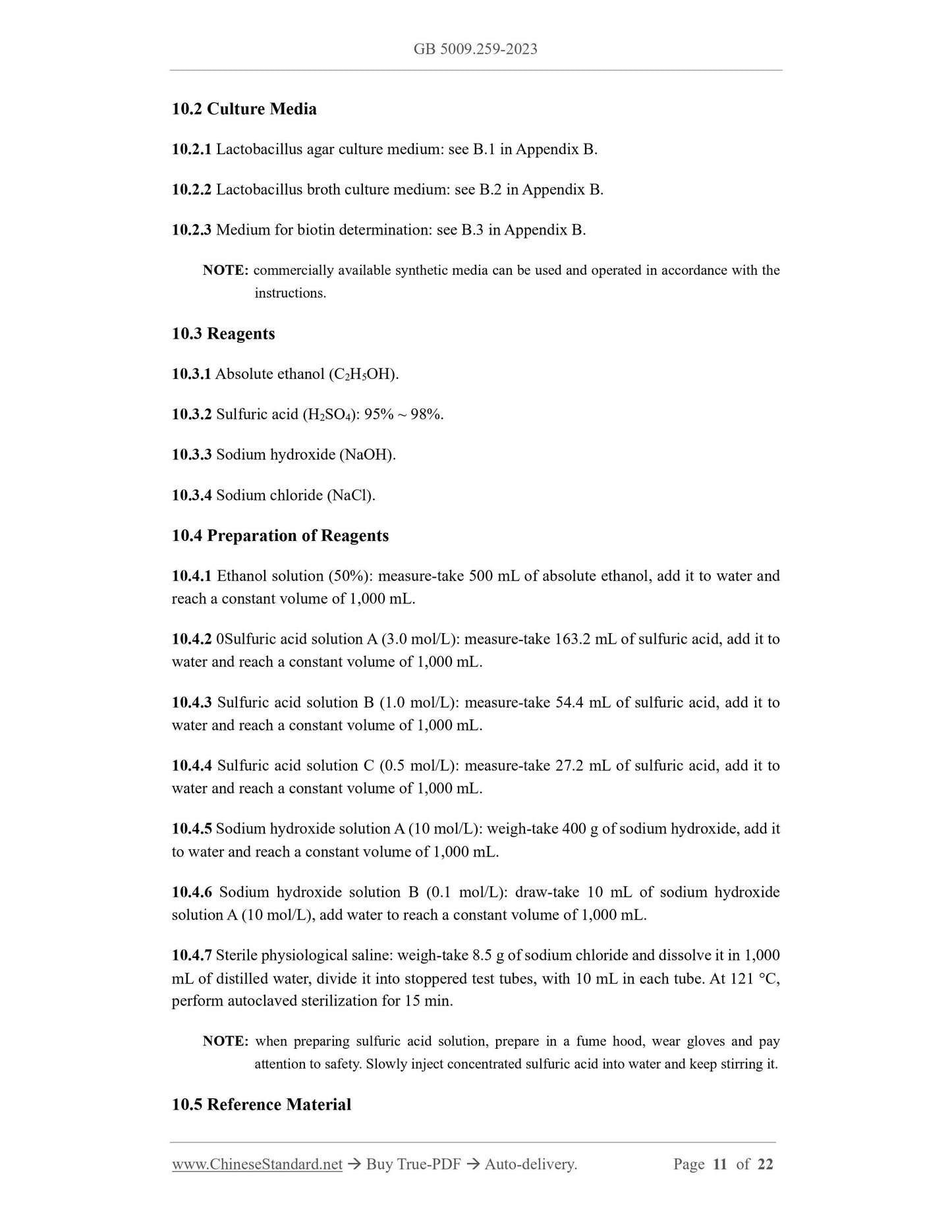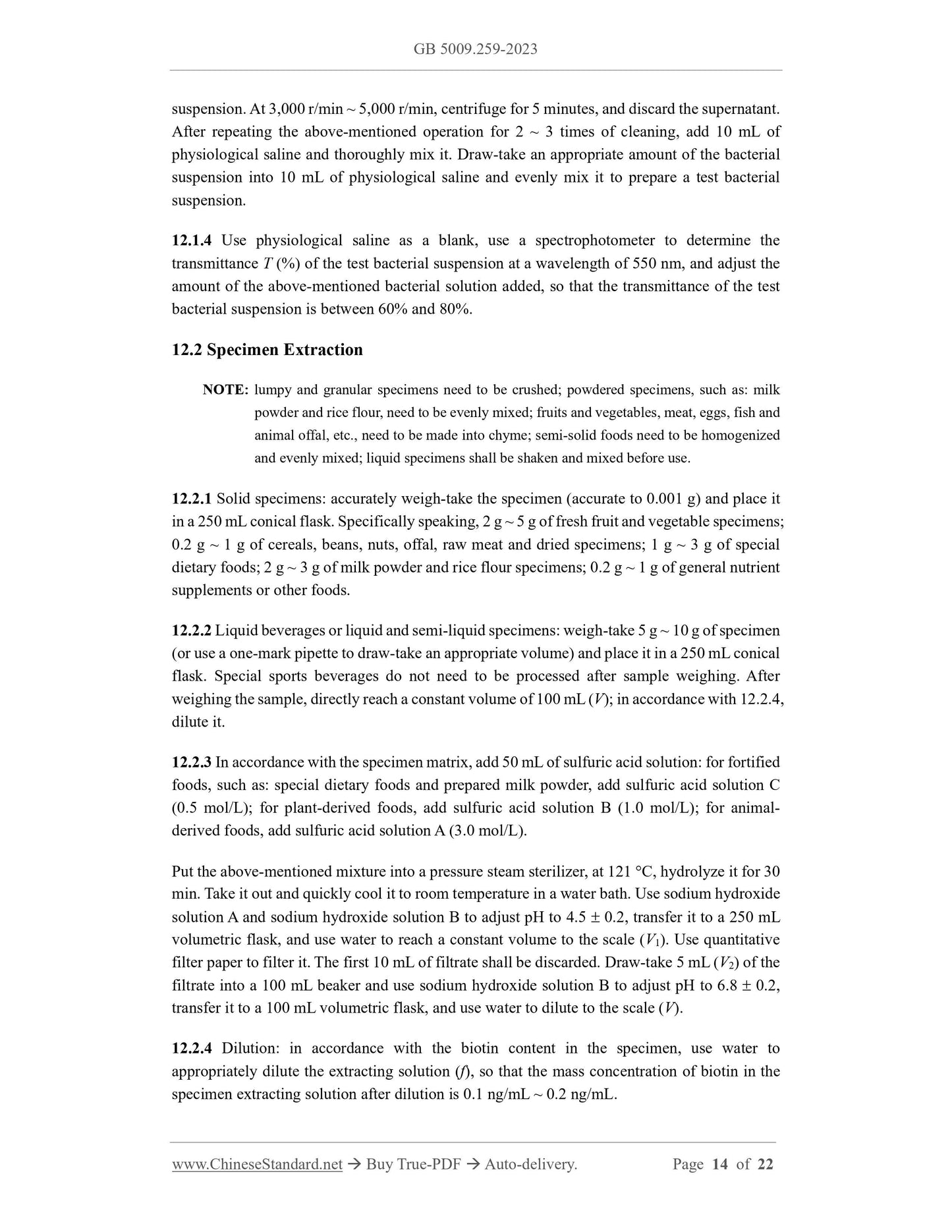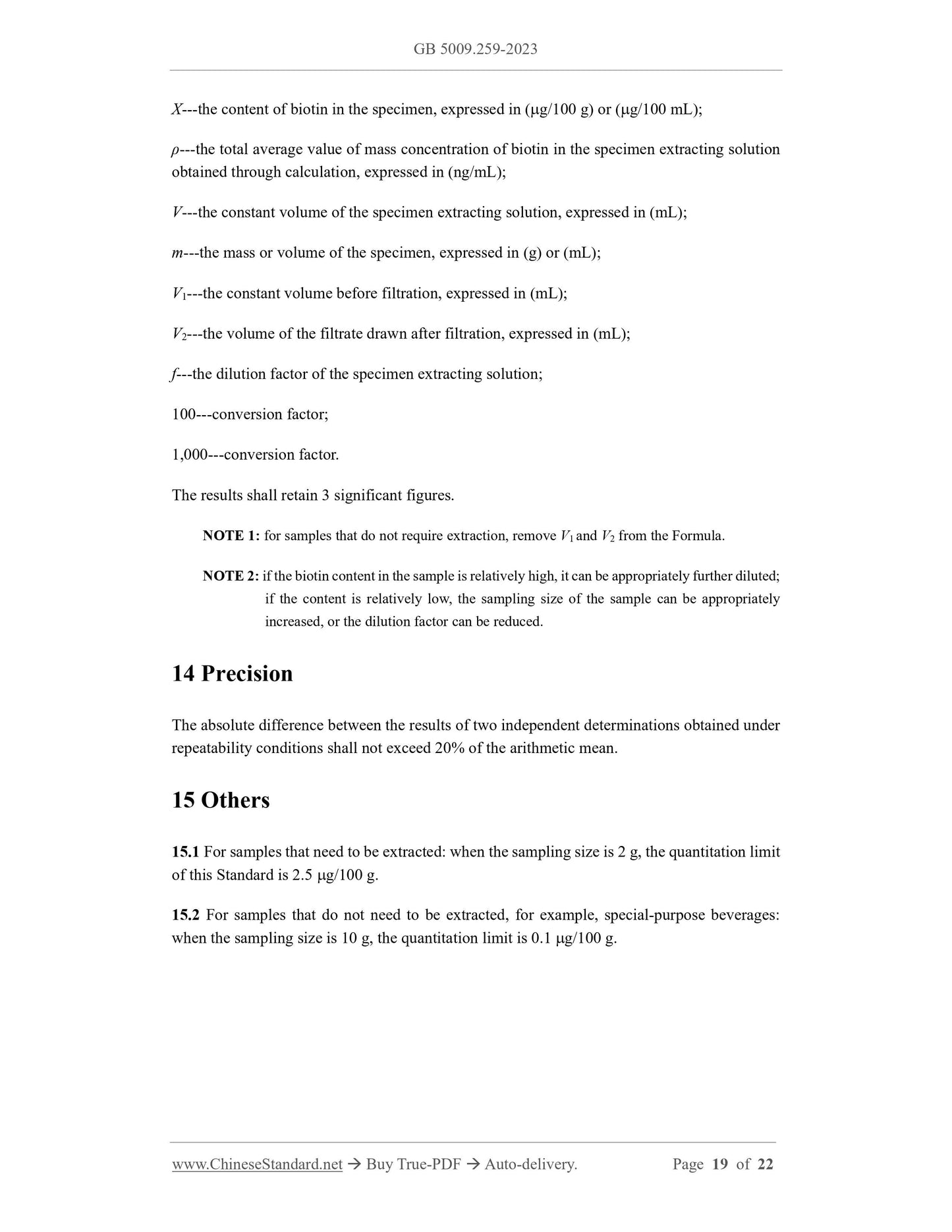1
/
of
11
www.ChineseStandard.us -- Field Test Asia Pte. Ltd.
GB 5009.259-2023 English PDF
GB 5009.259-2023 English PDF
Regular price
$260.00
Regular price
Sale price
$260.00
Unit price
/
per
Shipping calculated at checkout.
Couldn't load pickup availability
GB 5009.259-2023: National food safety standard - Determination of biotin in foods
Delivery: 9 seconds. Download (and Email) true-PDF + Invoice.Get Quotation: Click GB 5009.259-2023 (Self-service in 1-minute)
Newer / historical versions: GB 5009.259-2023
Preview True-PDF
Scope
This Standard specifies the methods for the determination of biotin in foods.Method 1 - liquid chromatography - tandem mass spectrometry is applicable to the
determination of biotin in prepared milk powder and special dietary foods.
Method 2 - microbiological method is applicable to the determination of biotin in foods.
Method I - Liquid Chromatography - Tandem Mass
Spectrometry
Basic Data
| Standard ID | GB 5009.259-2023 (GB5009.259-2023) |
| Description (Translated English) | National food safety standard - Determination of sialic acid in foods |
| Sector / Industry | National Standard |
| Classification of Chinese Standard | X09 |
| Word Count Estimation | 15,196 |
| Date of Issue | 2023-09-06 |
| Date of Implementation | 2024-03-06 |
| Issuing agency(ies) | National Health Commission of the People's Republic of China, State Administration for Market Regulation |
| Summary | This standard specifies the determination method of sialic acid in food. The first method of this standard, liquid chromatography-ultraviolet detection, is applicable to the determination of bound sialic acid in bird's nests and its products. The second method, liquid chromatography-fluorescence detection, and the third method, liquid chromatography-mass spectrometry/mass spectrometry, are applicable to Determination of sialic acid in liquid milk, milk powder, cakes and beverages. |
Share



